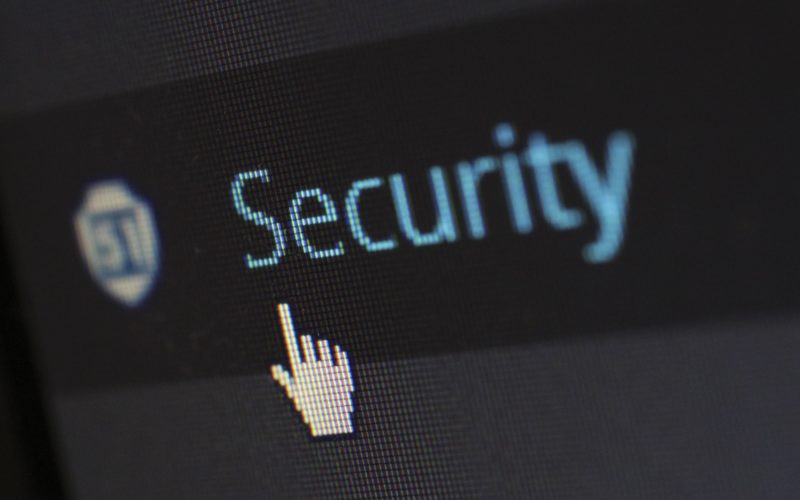Picture this: you’ve dedicated years to building your small enterprise, accumulating a comprehensive client database and a bespoke range of services. However, one morning, you discover your systems breached, customer data exposed, and credibility under siege.
Regrettably, this nightmare is the stark reality for numerous small businesses. Once viewed as an issue predominantly for large corporations, cybersecurity threats are now penetrating small businesses at an alarming rate.
Consequently, adopting stringent cybersecurity best practices is now a luxury but essential for small-scale firms. This blog post will steer you through hands-on, effective cybersecurity strategies to secure data and fortify your business.
Are you prepared to fend off cyber threats? Let’s get started.
Identifying Cybersecurity Threats: The Cornerstone of Protection
The first step in securing your business from cyber threats is comprehending what they are and their manifestations. Small companies face cybersecurity threats, from deceptive phishing and destructive malware to destructive ransomware attacks. Each can lead to significant data loss, financial setbacks, and reputational damage.
For example, phishing attacks involve fraudulent emails that coax staff into exposing confidential information. In contrast, malware incorporates destructive software like viruses and worms intended to infiltrate or harm a computer system.
Ransomware is a virulent form of malware where a hacker restricts access to a company’s digital files and demands a ransom for their release.
Grasping these threats is essential, but it’s often advantageous for businesses to have seasoned professionals on their side. This is where additional education and training can make a significant difference.
Small companies could, for example, encourage their IT personnel to broaden their cybersecurity understanding via enrolling in professional degrees like online cyber security degree masters. This can aid in strengthening your company’s defenses, ready to repel emerging cyber threats effectively.
Cybersecurity Best Practice #1: Cultivating Employee Training and Awareness
The responsibility of cybersecurity extends beyond your IT department; every employee plays a part. Human error significantly contributes to security breaches, making employee awareness and training pivotal to your company’s cybersecurity stance.
Start by forming a detailed cybersecurity policy that outlines the safe and acceptable use of your company’s systems. Regularly conduct cybersecurity training sessions that cover recognizing phishing attempts, safe social media use, and safe internet browsing habits.
Simulated cyber attacks can also be an effective teaching tool, allowing employees to comprehend threats in a controlled setting.
Remember, continuous learning is crucial. Cyber threats are continuously evolving, and so should your training. Encourage employees to keep themselves updated with the latest cybersecurity trends and threats.
Cybersecurity Best Practice #2: Deploying Firewalls and Encryption
Firewalls and encryption are vital components in any small business’s cybersecurity approach. A firewall is your initial defense against cyber threats, preventing unauthorized access to your company’s network. Simultaneously, encryption ensures that even if data is intercepted, it can’t be interpreted without the unique decryption key.
When deploying firewalls, ensure they’re installed on all devices, not just your office’s network. This is particularly crucial with the rise of remote work, where employees might access business data from unsecured networks.
According to Forbes, Encryption should be applied to all sensitive data, whether stored on your systems or transmitted over the internet. Promote encrypted communication for emails, especially when they contain sensitive data.
Keep in mind that the efficiency of these tools hinges on proper deployment. If in doubt, consult a cybersecurity professional or consider investing in an employee’s advanced cybersecurity education. Their broad curriculum covers various subjects, including encryption and firewall management, preparing students to tackle complex cybersecurity challenges businesses face.
Cybersecurity Best Practice #3: Regular Software Updates
Software updates are more than enhancements to system performance and new features; they often include crucial patches for security vulnerabilities. Overlooking these updates can leave your systems vulnerable to cyber threats, making regular software updates a critical part of your cybersecurity strategy.
Ensure all your company’s software – encompassing operating systems, applications, and firmware – is configured to update automatically whenever possible. If automatic updates aren’t feasible, set a schedule for manual updates and adhere to it.
Also, remember to correct any personal devices employees use for work, as these can pose a potential security risk.
Cybersecurity Best Practice #4: Data Backup and Recovery Plans
Even with the most robust cybersecurity practices, the risk of data loss due to cyber attacks or system failures still looms. Therefore, backing up your company’s data regularly and having a recovery plan is essential.
Backups should be regular, comprehensive, and stored securely off-site. This ensures quick restoration of business operations even in the most extreme scenarios. Your recovery plan should detail the steps to retrieve the backed-up data and restore your systems and who is responsible for each task.
Planning for such unfortunate events might seem pessimistic, but it’s always better to be proactive than reactive in cybersecurity. Refer to this enlightening Forbes article for more insights on data backup strategies.
Cybersecurity Best Practice #5: Multi-Factor Authentication
Multi-Factor Authentication (MFA) is a system of access control that requires more than one form of verification, or ‘factor,’ to confirm a user’s identity. These factors are typically something the user knows (like a password), something the user possesses (like a security token), or a fingerprint.
MFA introduces an extra layer of security to your data, making it significantly more challenging for cybercriminals to gain unauthorized access. The intruder needs the second factor to access the system, even if a password is compromised.
Most modern systems and software offer MFA options, so it’s a matter of activating it. Training your employees on MFA may be required, but the added security makes this effort worth it.
Cybersecurity Best Practice #6: Developing an Incident Response Strategy
In the face of a cyber intrusion, a well-structured incident response strategy can considerably reduce harm and limit the duration and expenses of recovery. This blueprint outlines the steps to be executed immediately upon discovering a breach or attack. It encompasses pinpointing the nature of the violation, confining the adverse effects, eliminating the root cause, restoring systems and data, and scrutinizing the incident for lessons to avert similar occurrences.
Not only is it a plan for a technical response, but it also includes a communication blueprint to keep clients and personnel. If necessary, regulators are in the loop, maintaining transparency throughout.
Regular practice exercises mimicking potential scenarios can train your team to respond quickly and effectively when the situation is actual. While prevention is the primary aim of cybersecurity, preparation to tackle an incident holds equal importance.
Final Thoughts
Cybersecurity is a fundamental aspect of any business in today’s digital age, and small businesses are no exception. You can strengthen your business’s cybersecurity stance by identifying the threats, training your employees, deploying firewalls and encryption, updating software routinely, backing up data, and employing multi-factor authentication.
While it may seem intimidating, the sense of security and protection you gain render these practices crucial. Remember, cybersecurity is not a one-off effort but a continual commitment to safeguarding your business and its most valuable asset – data.












